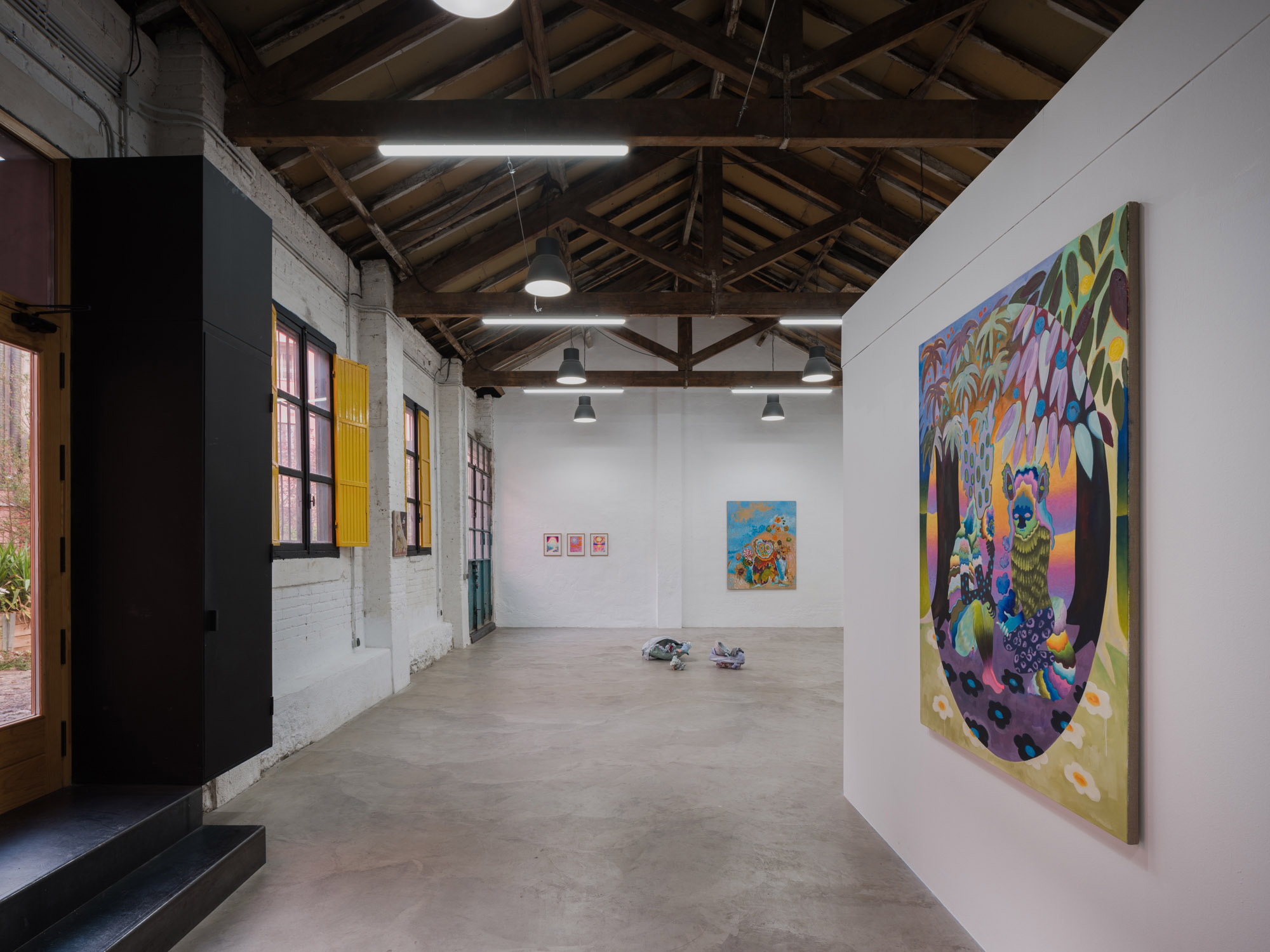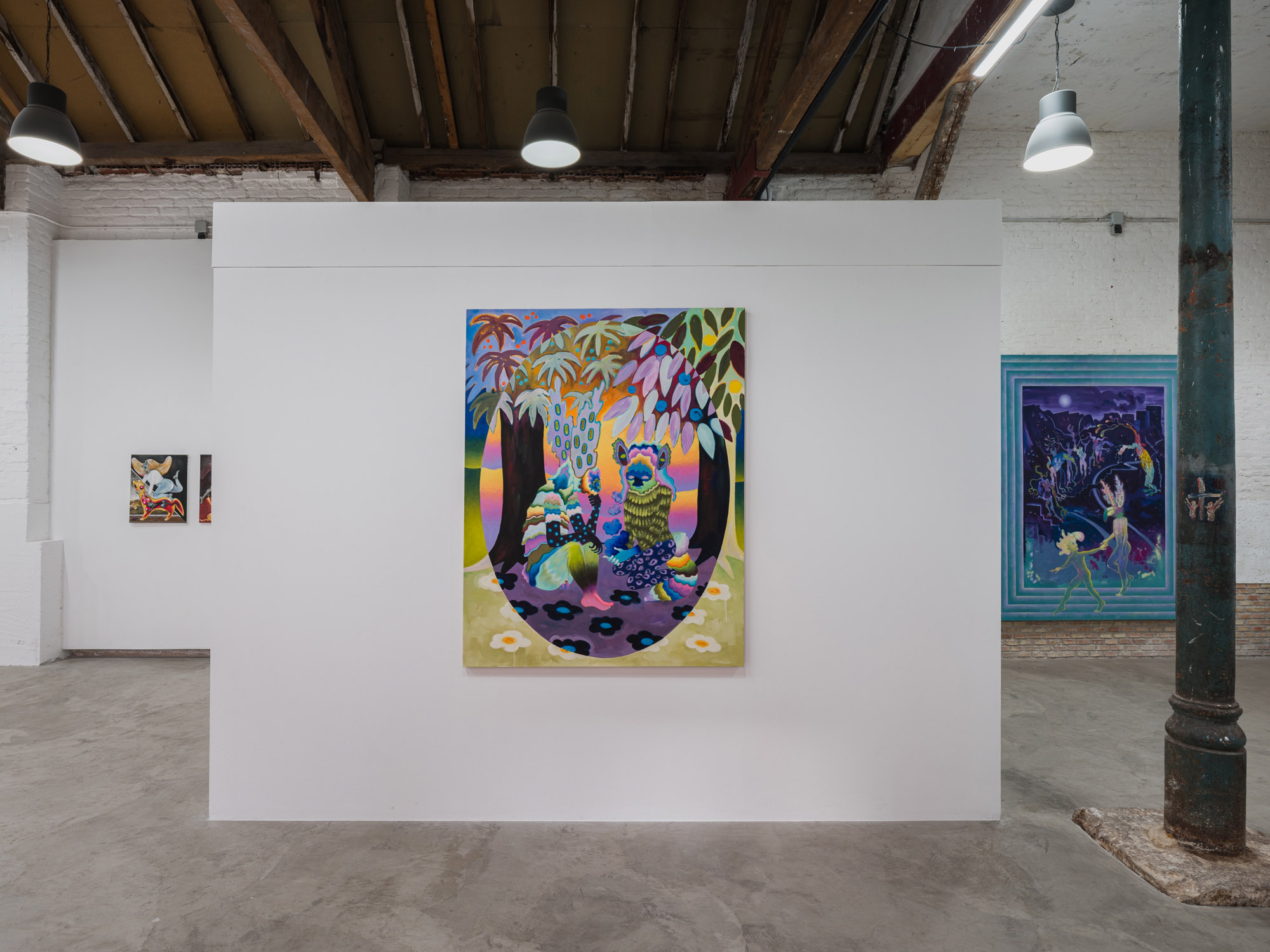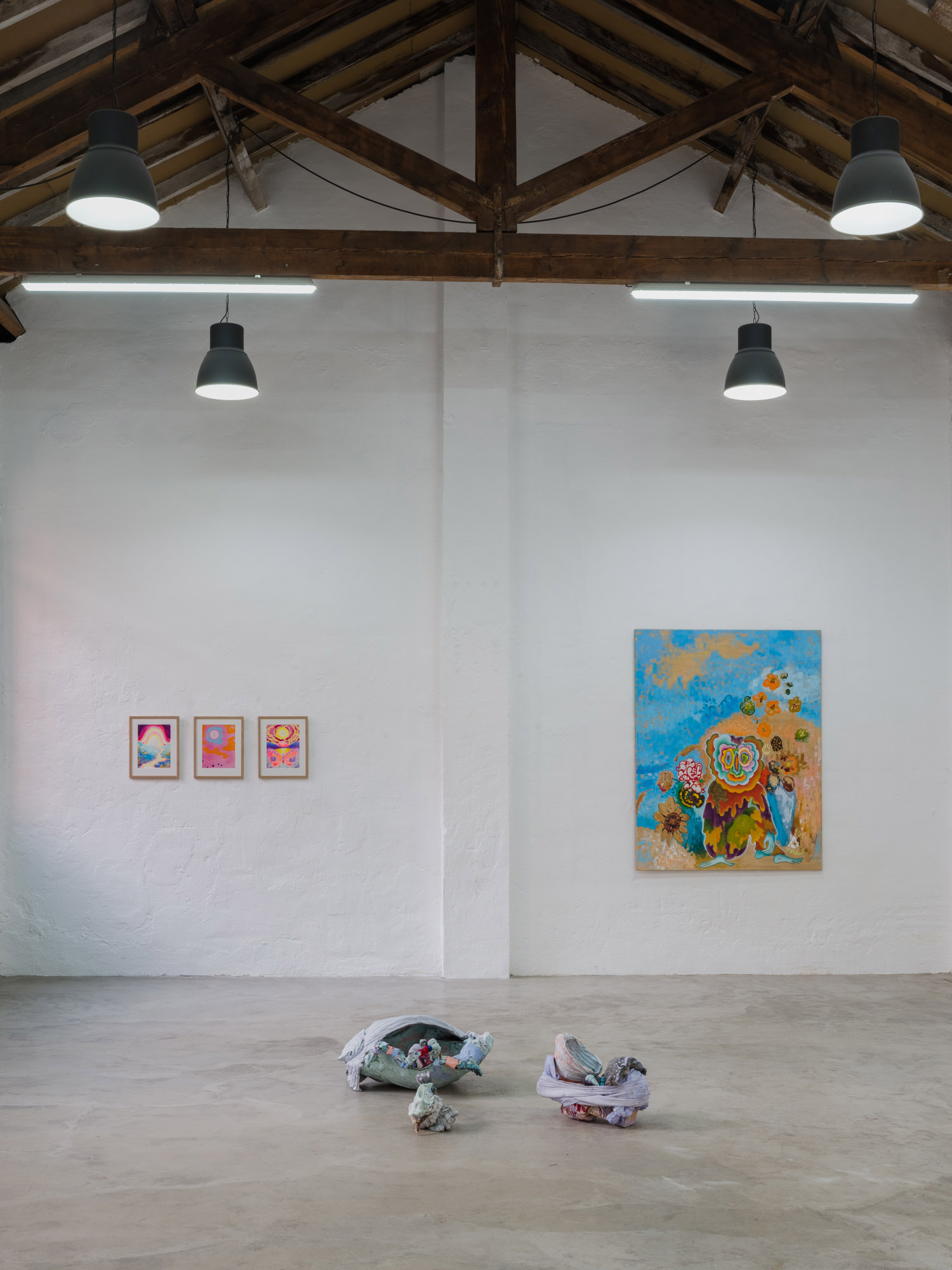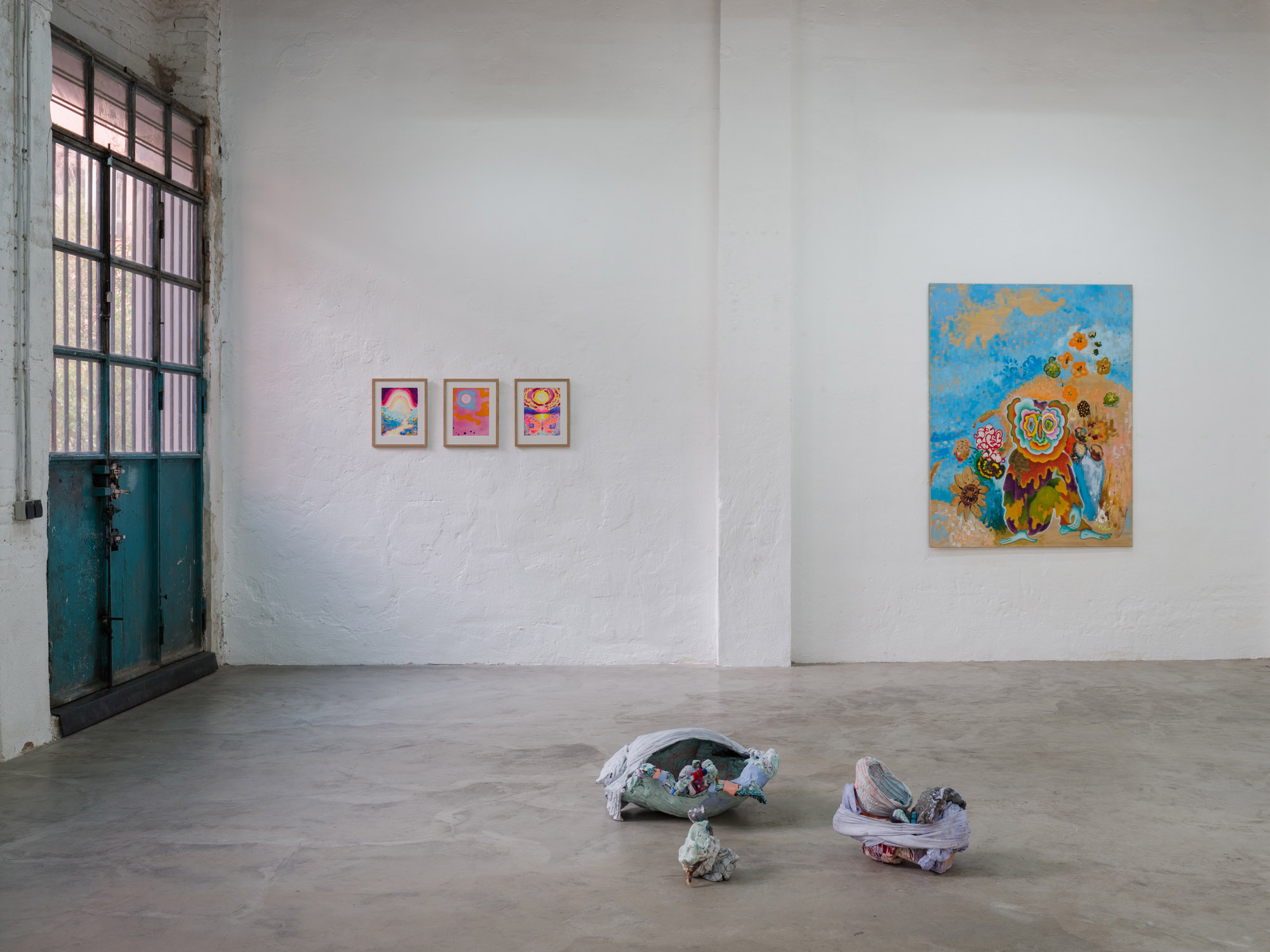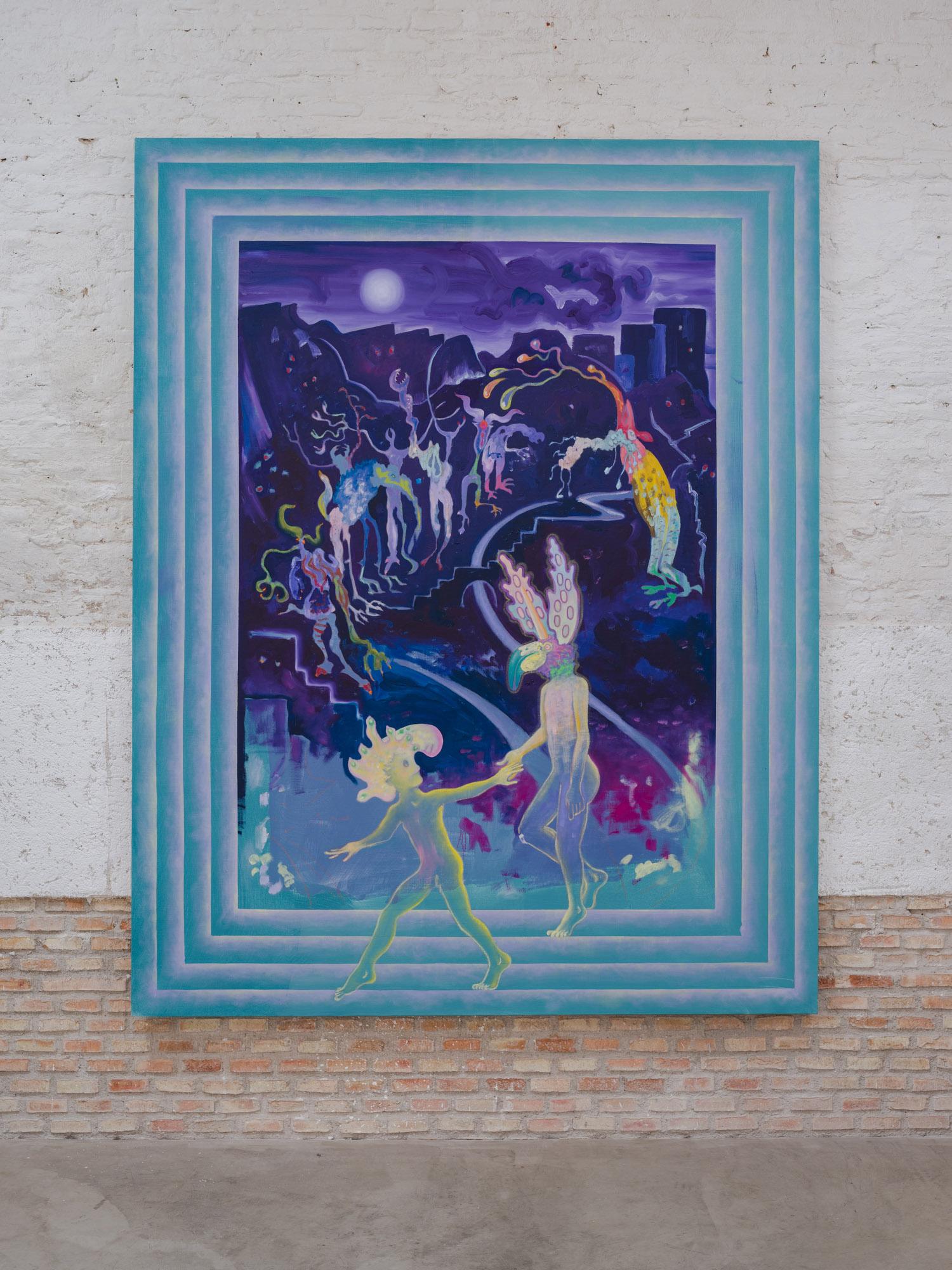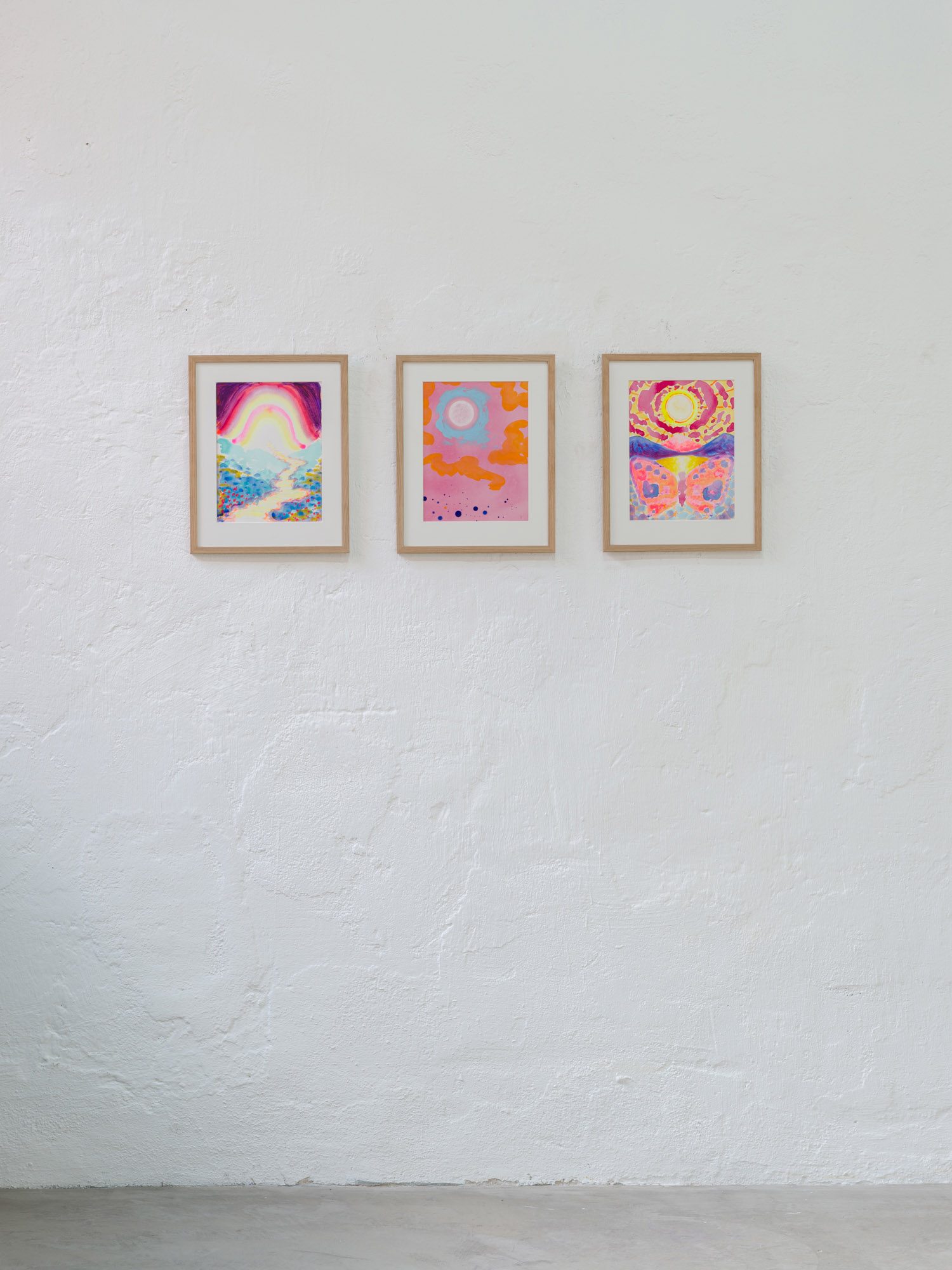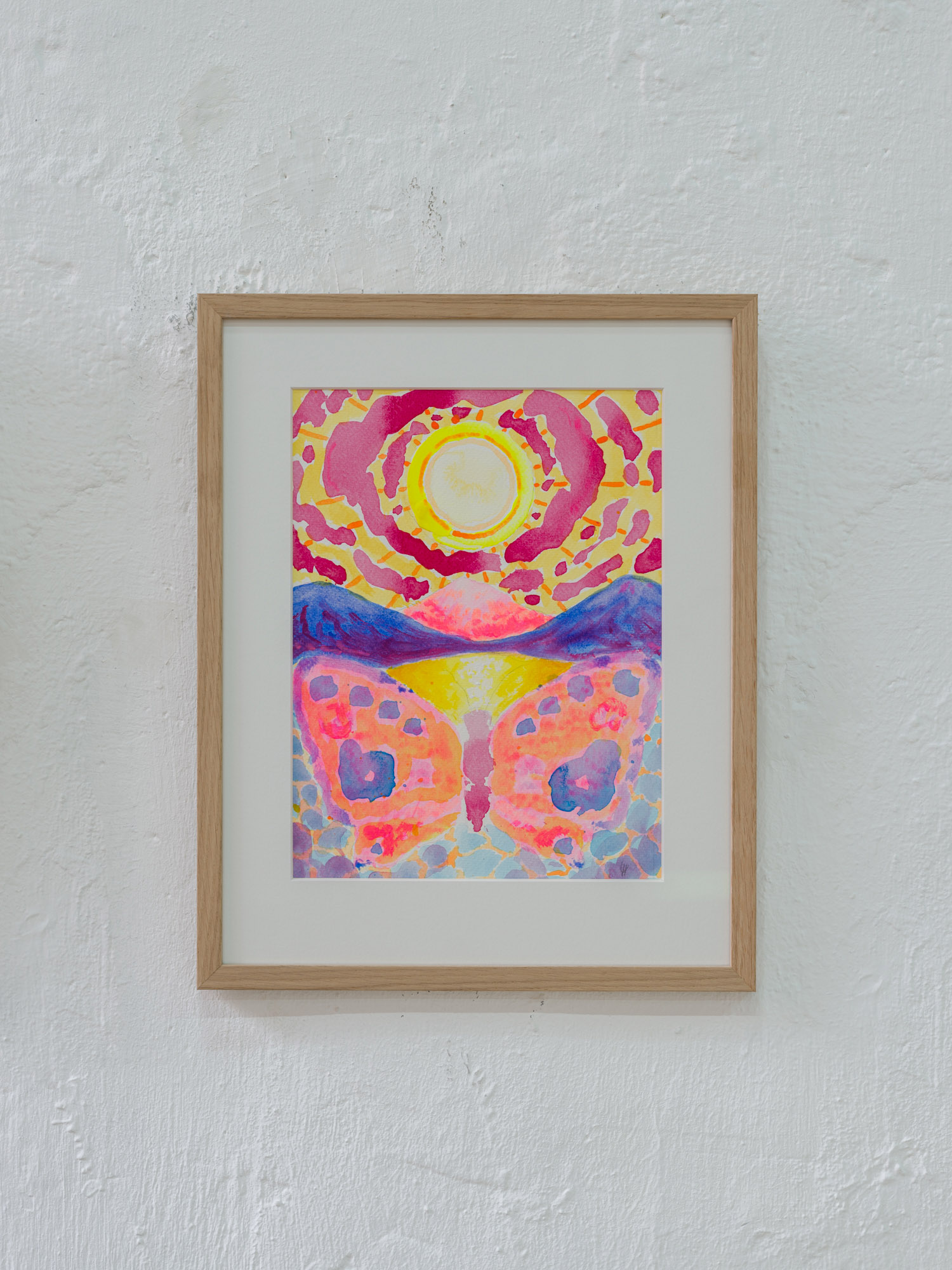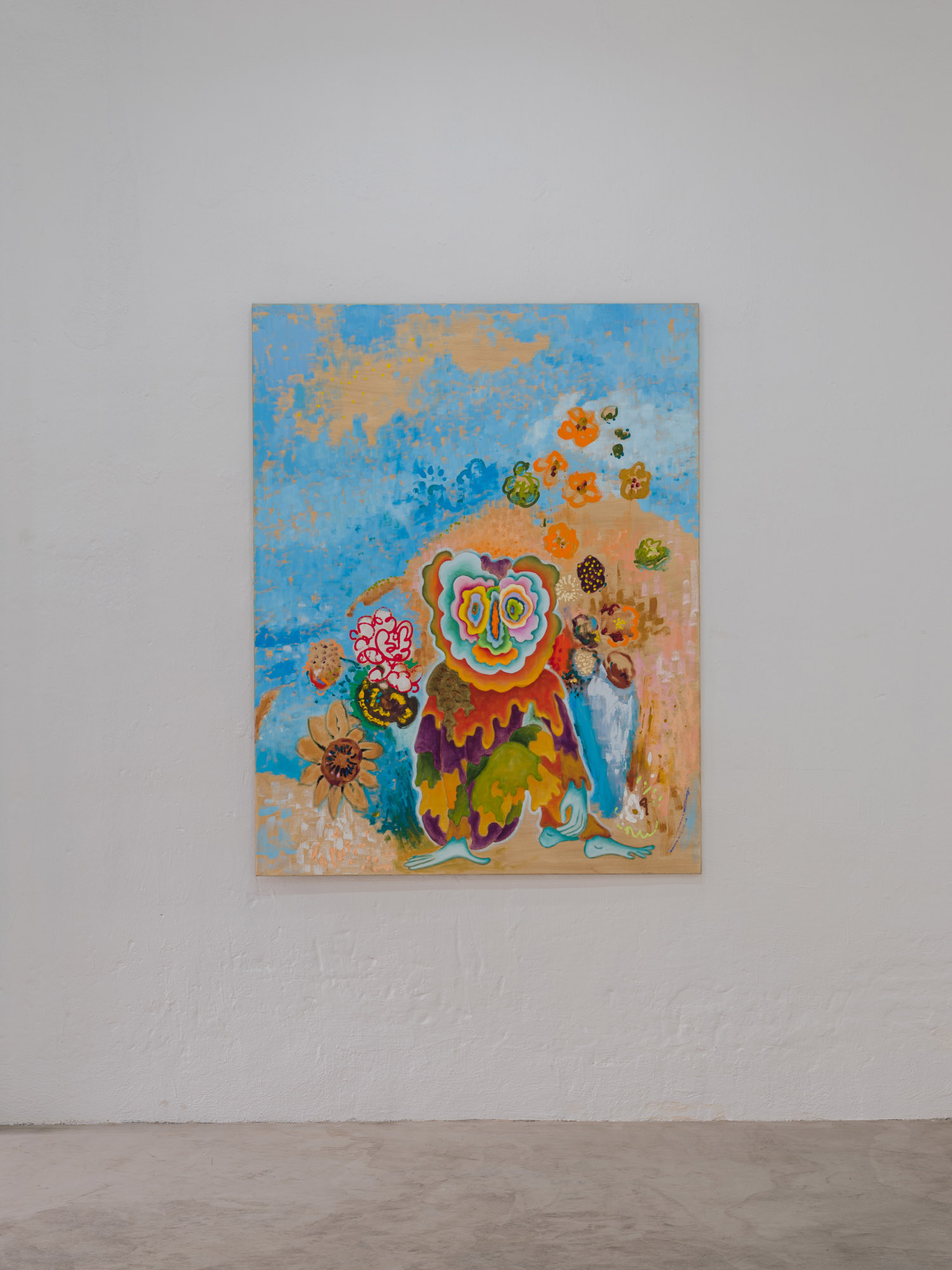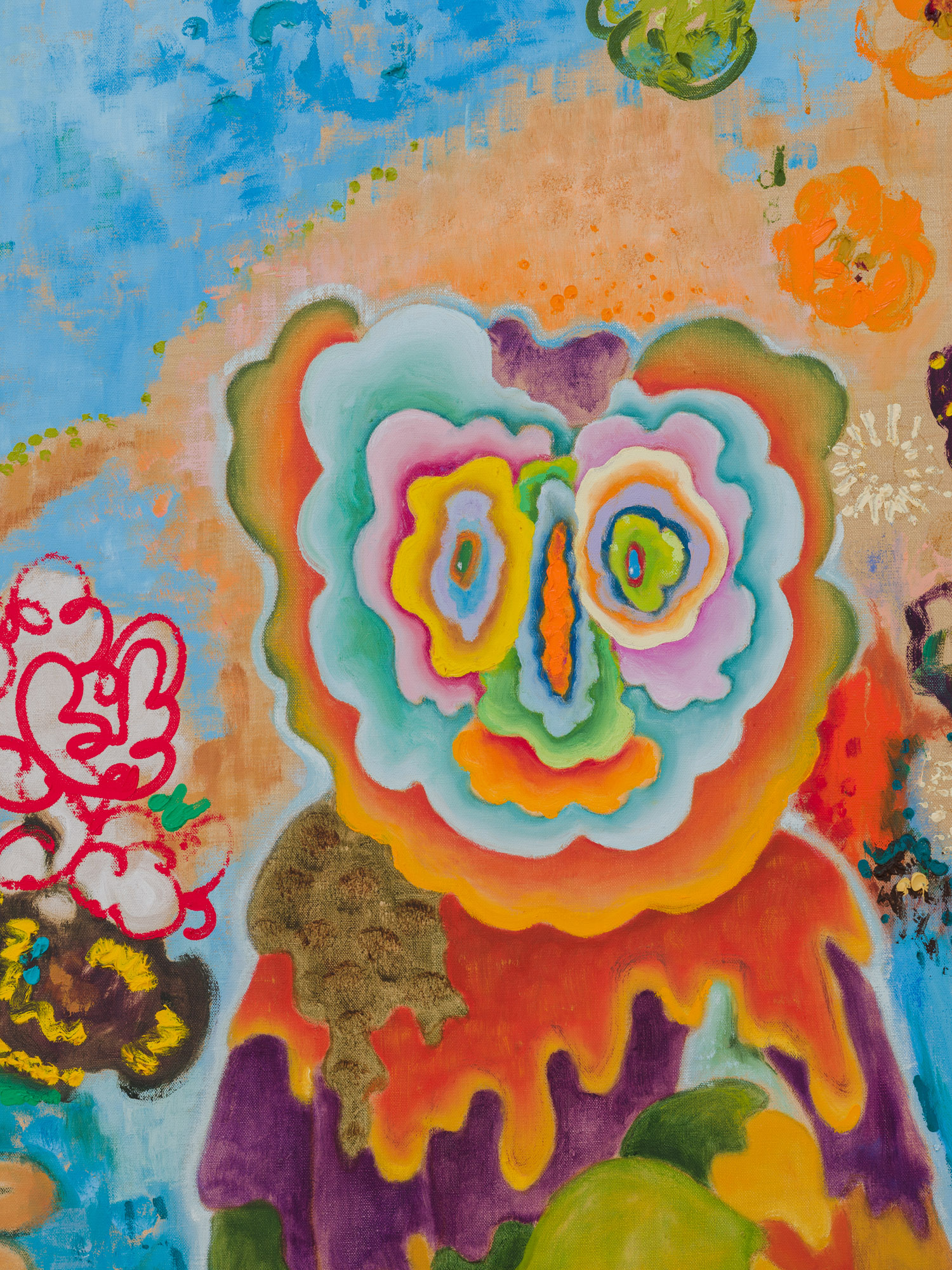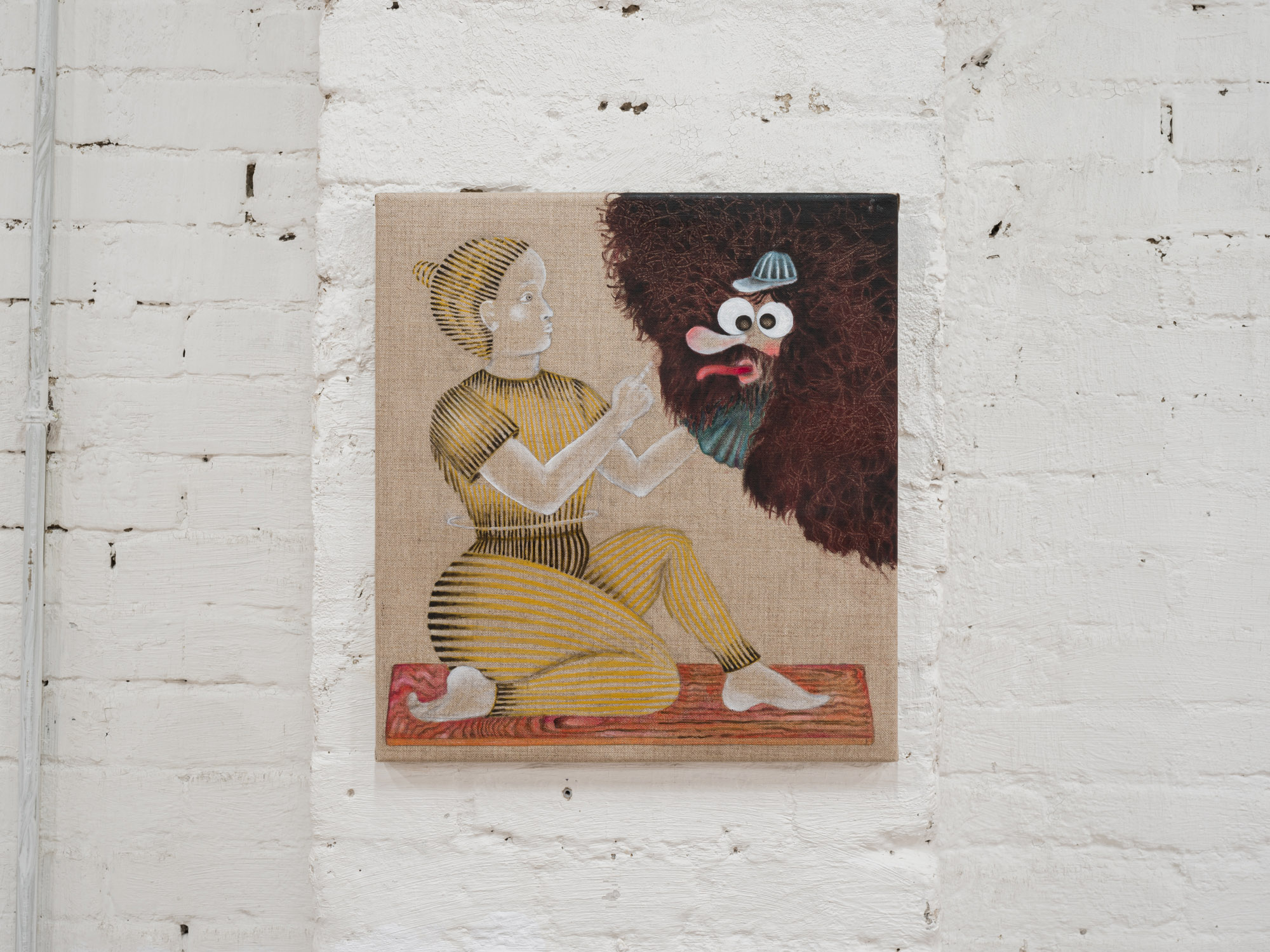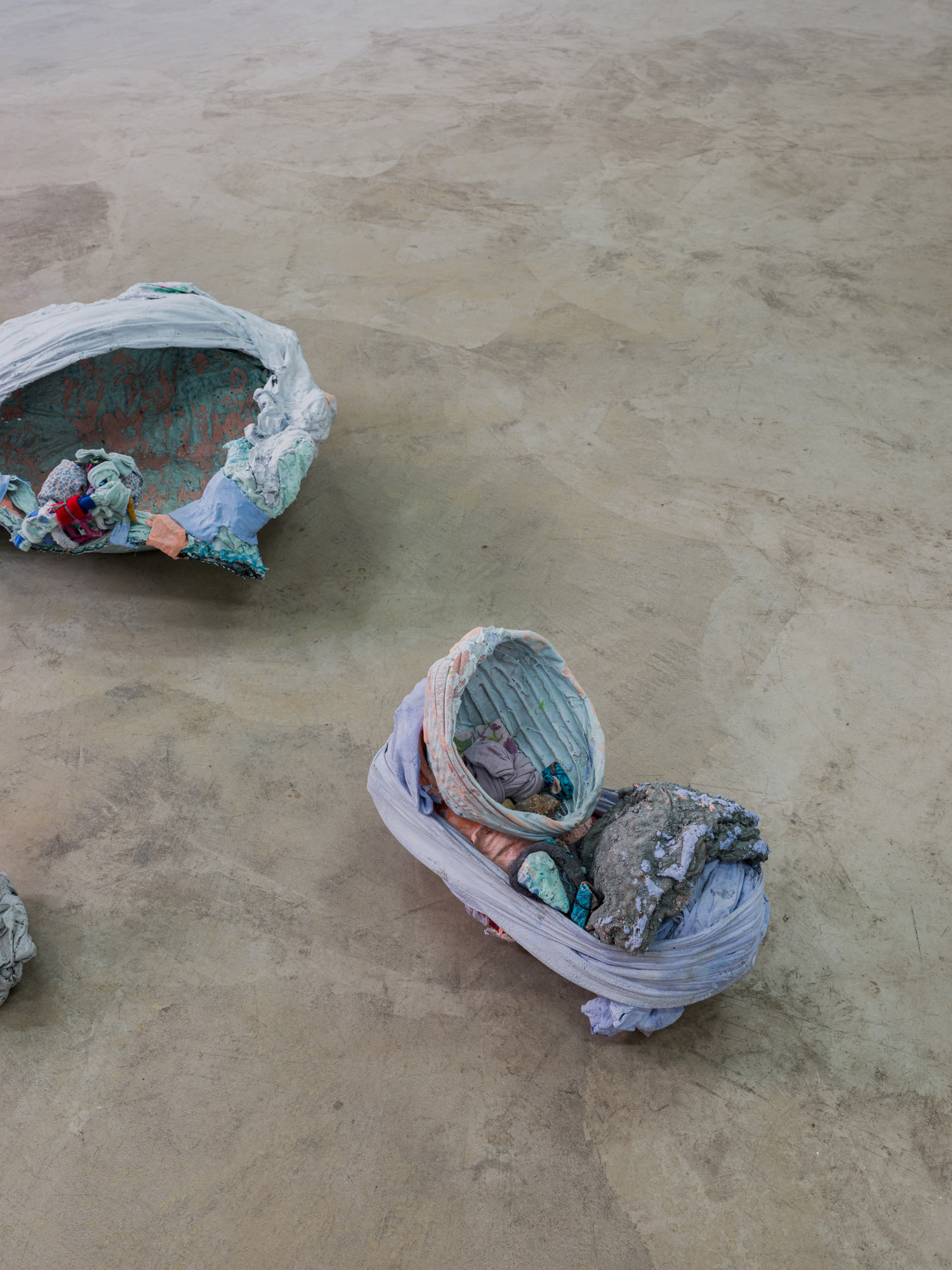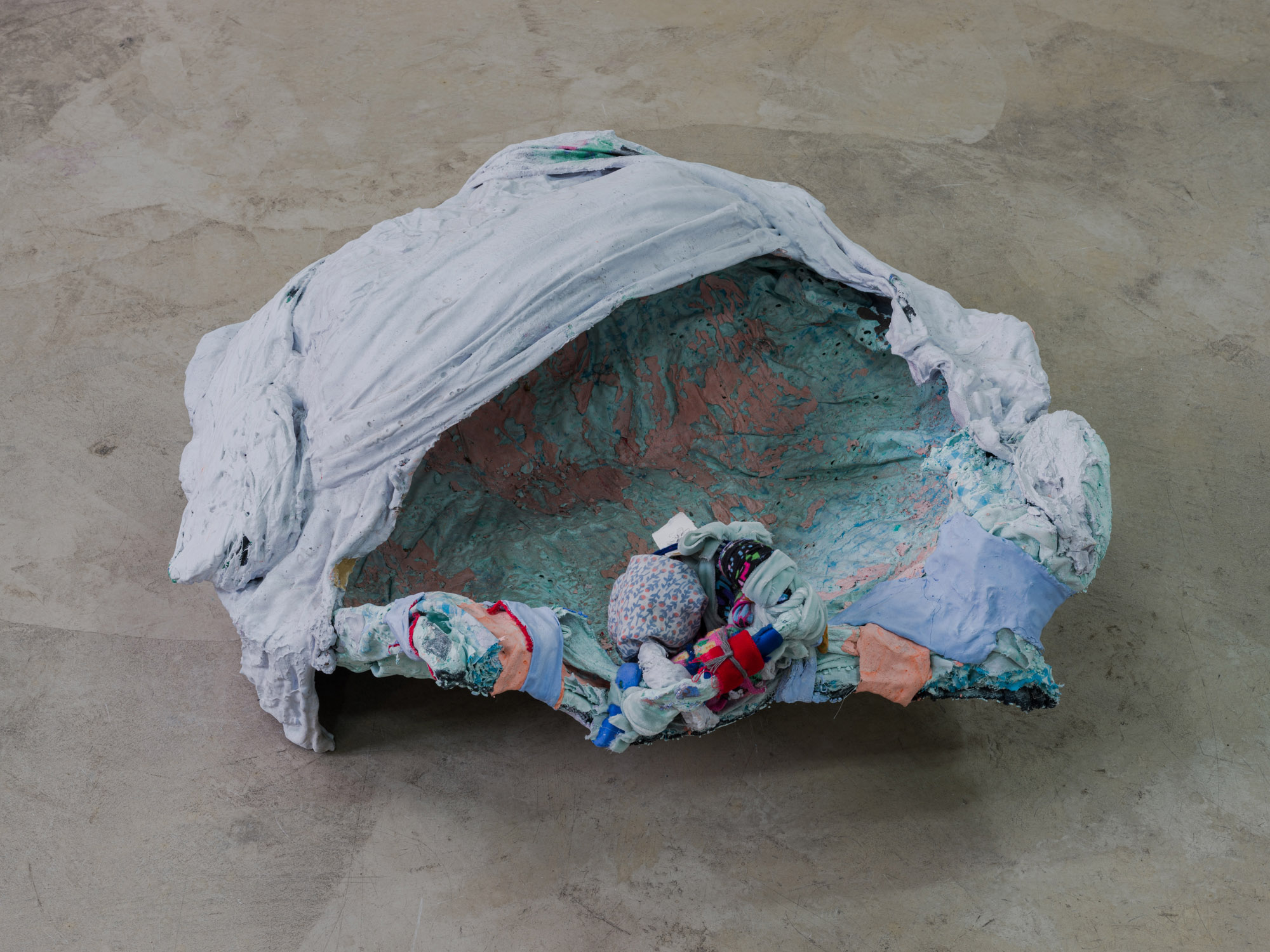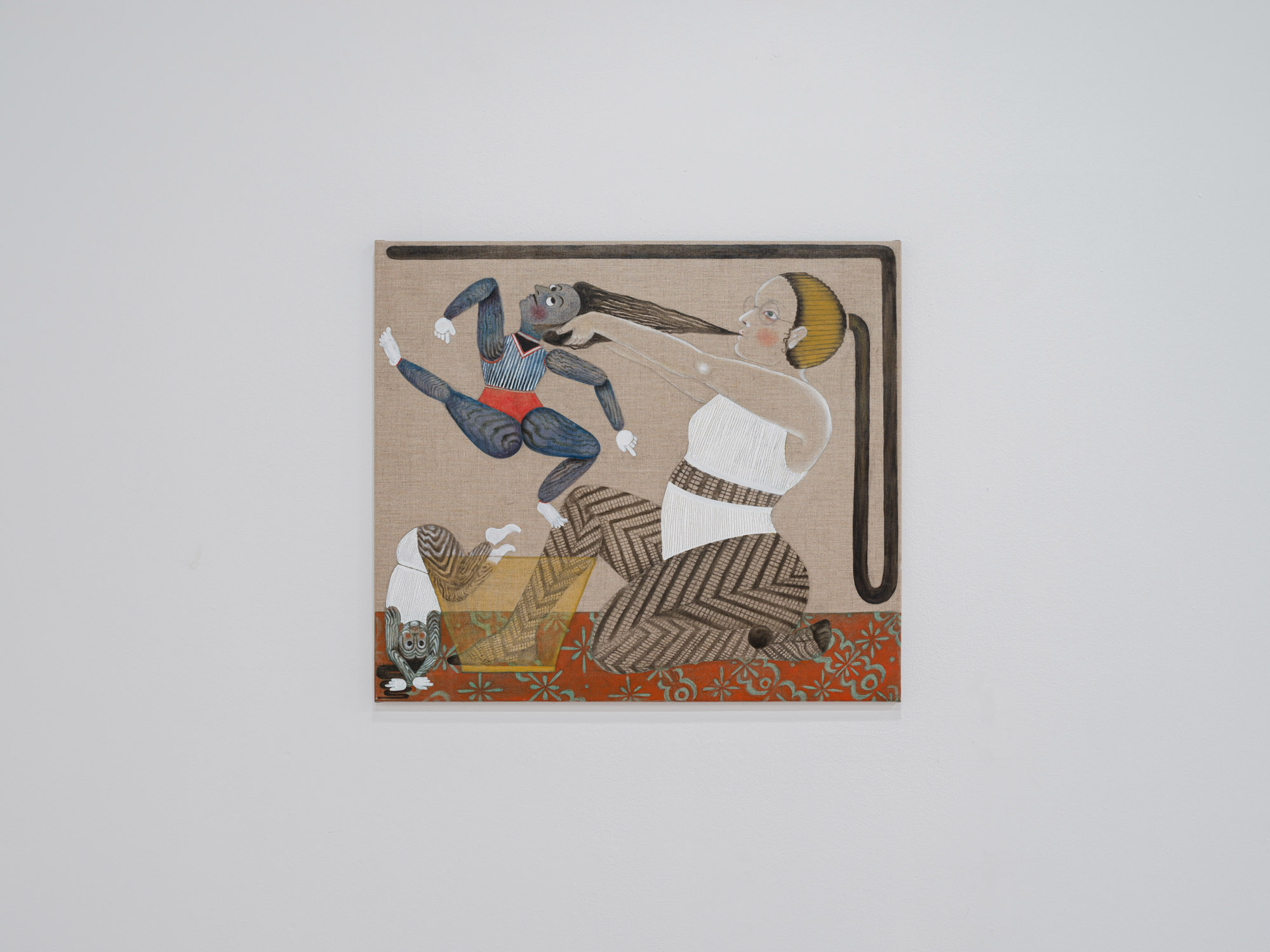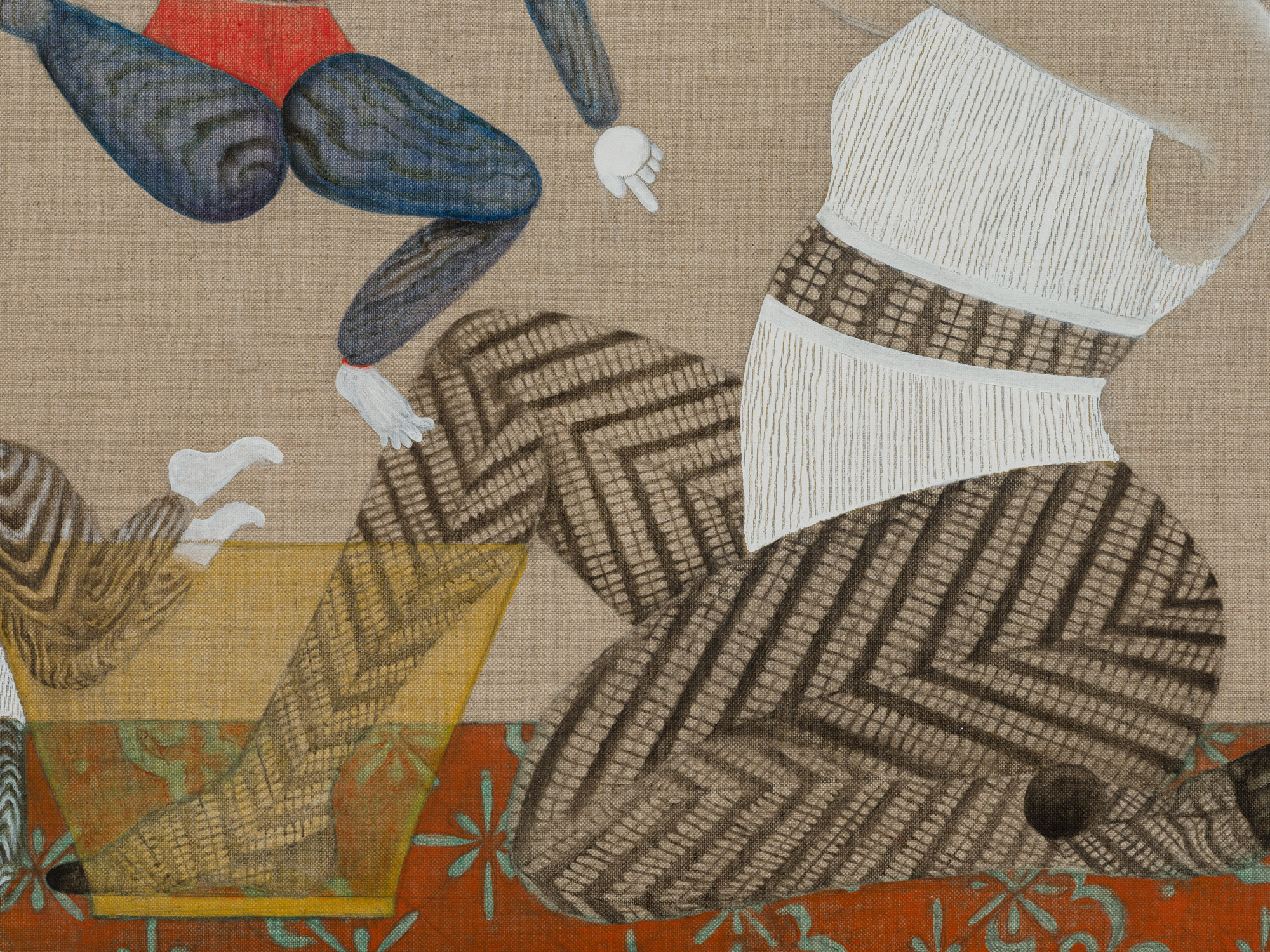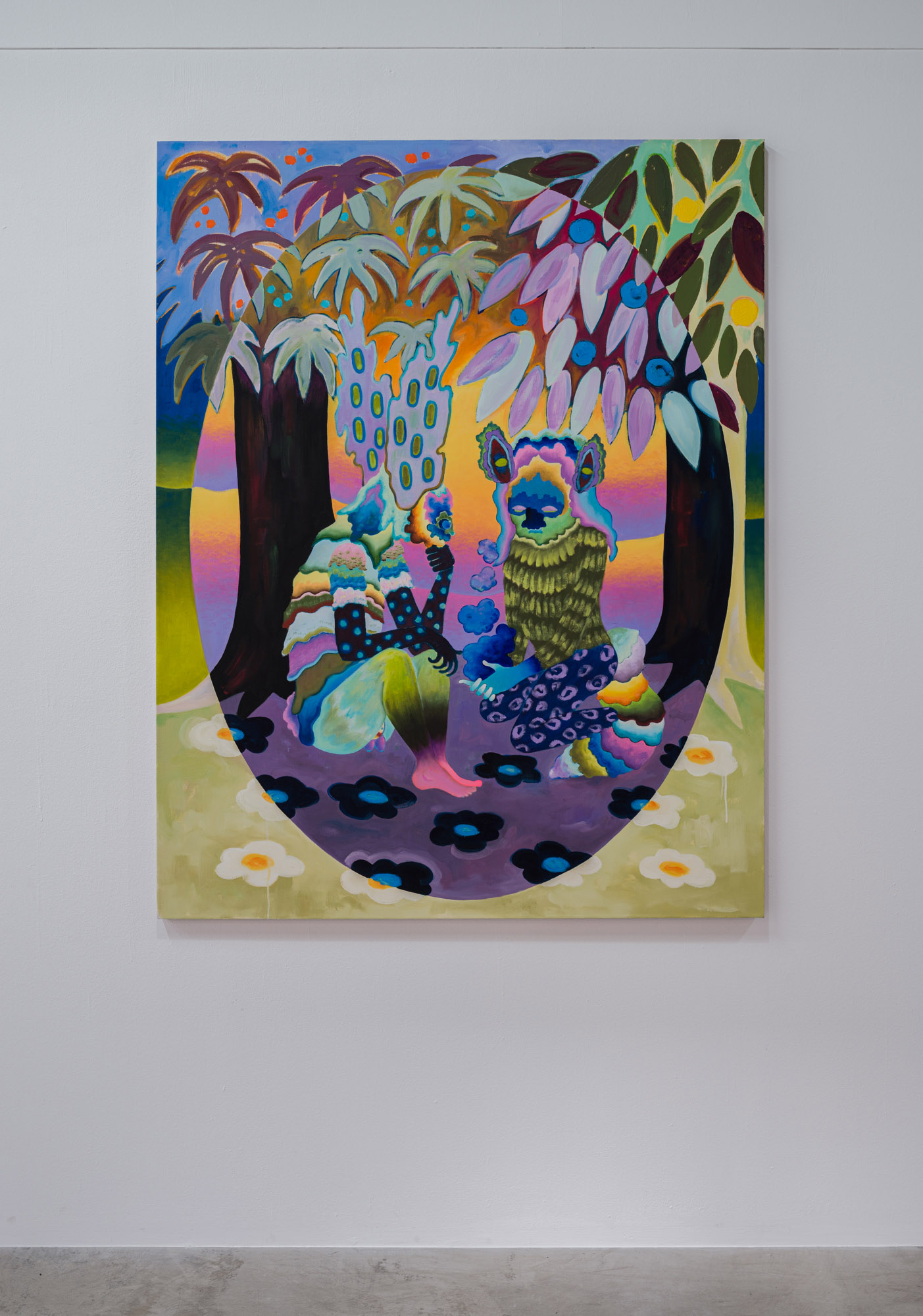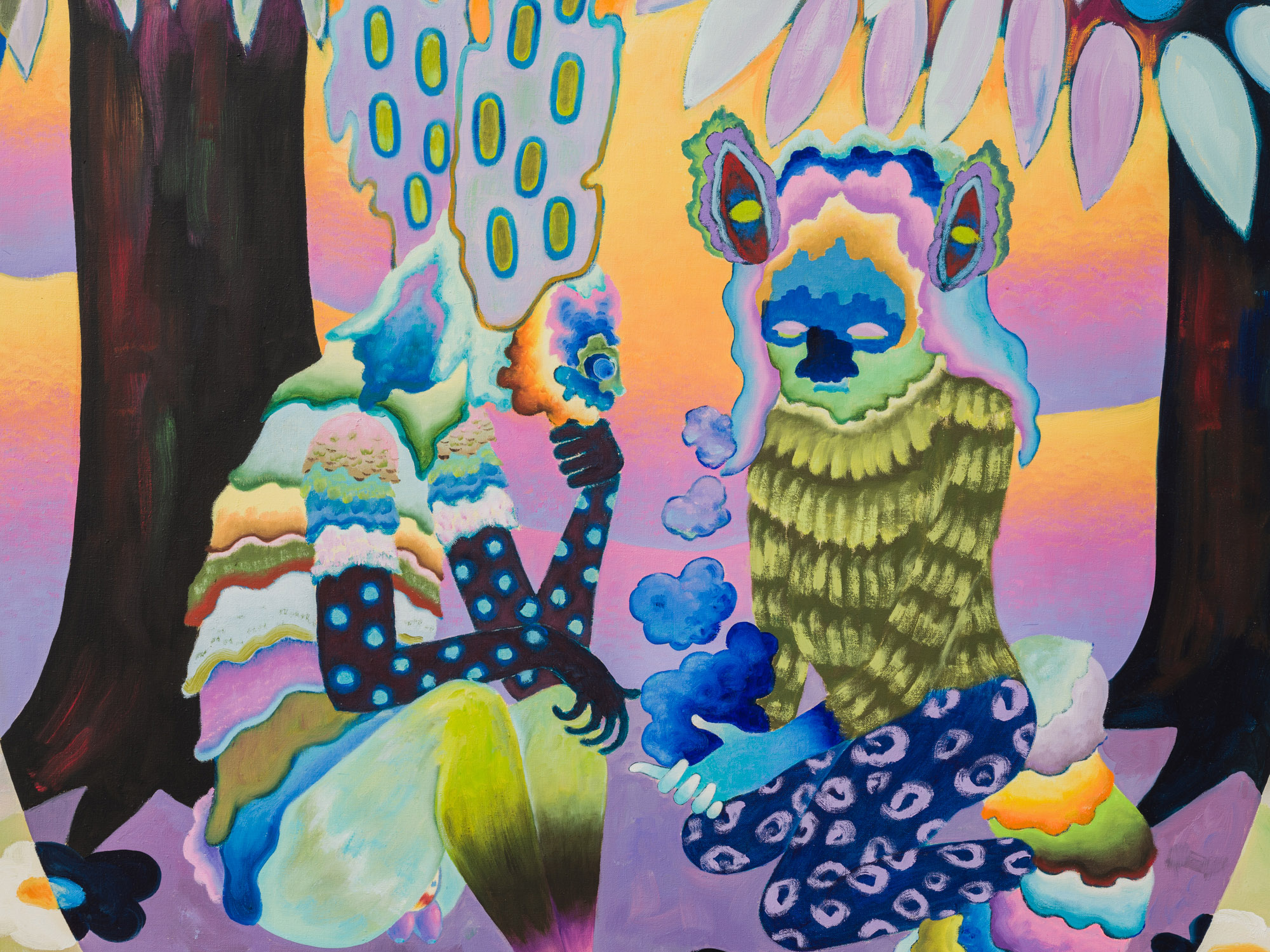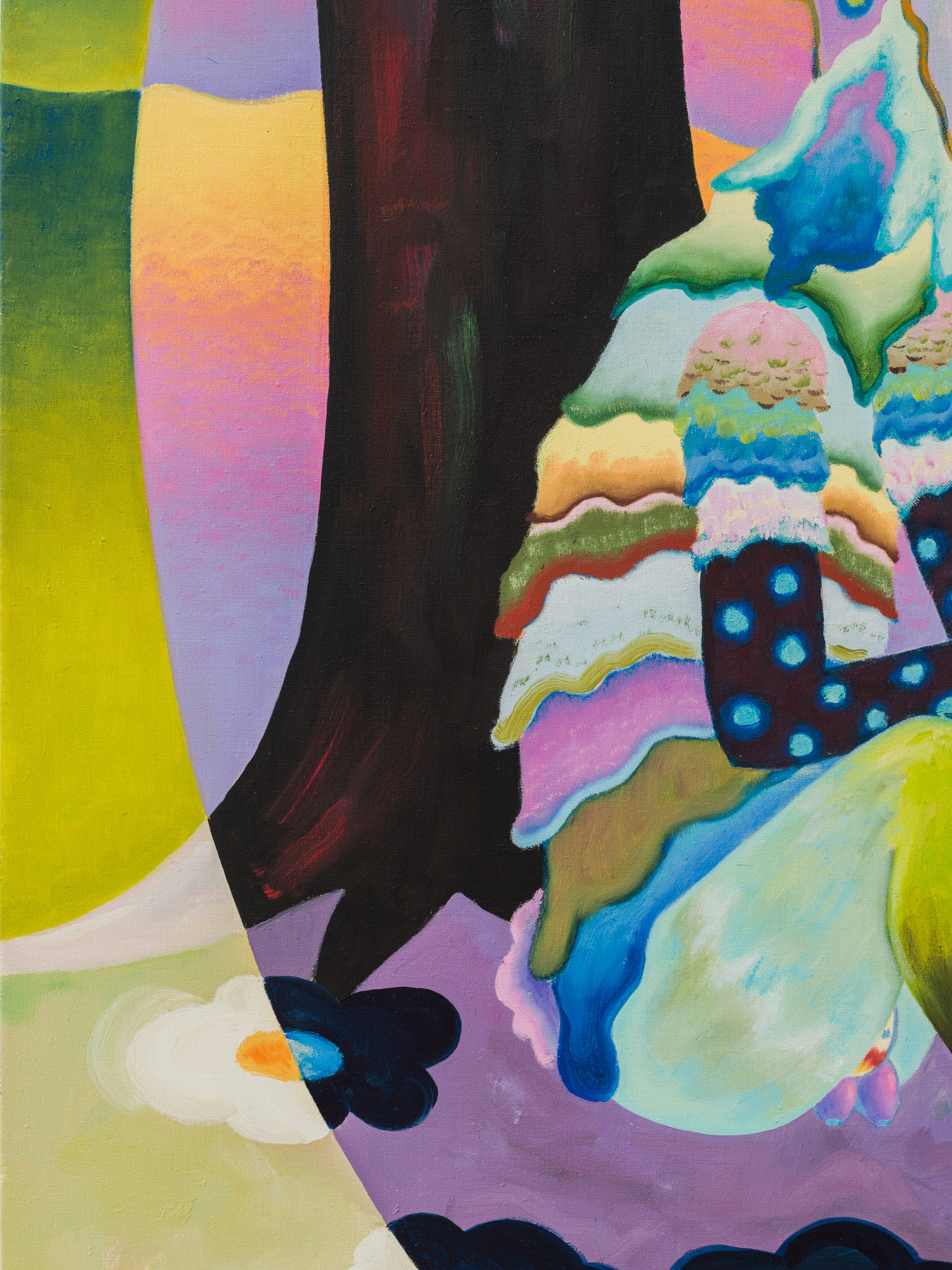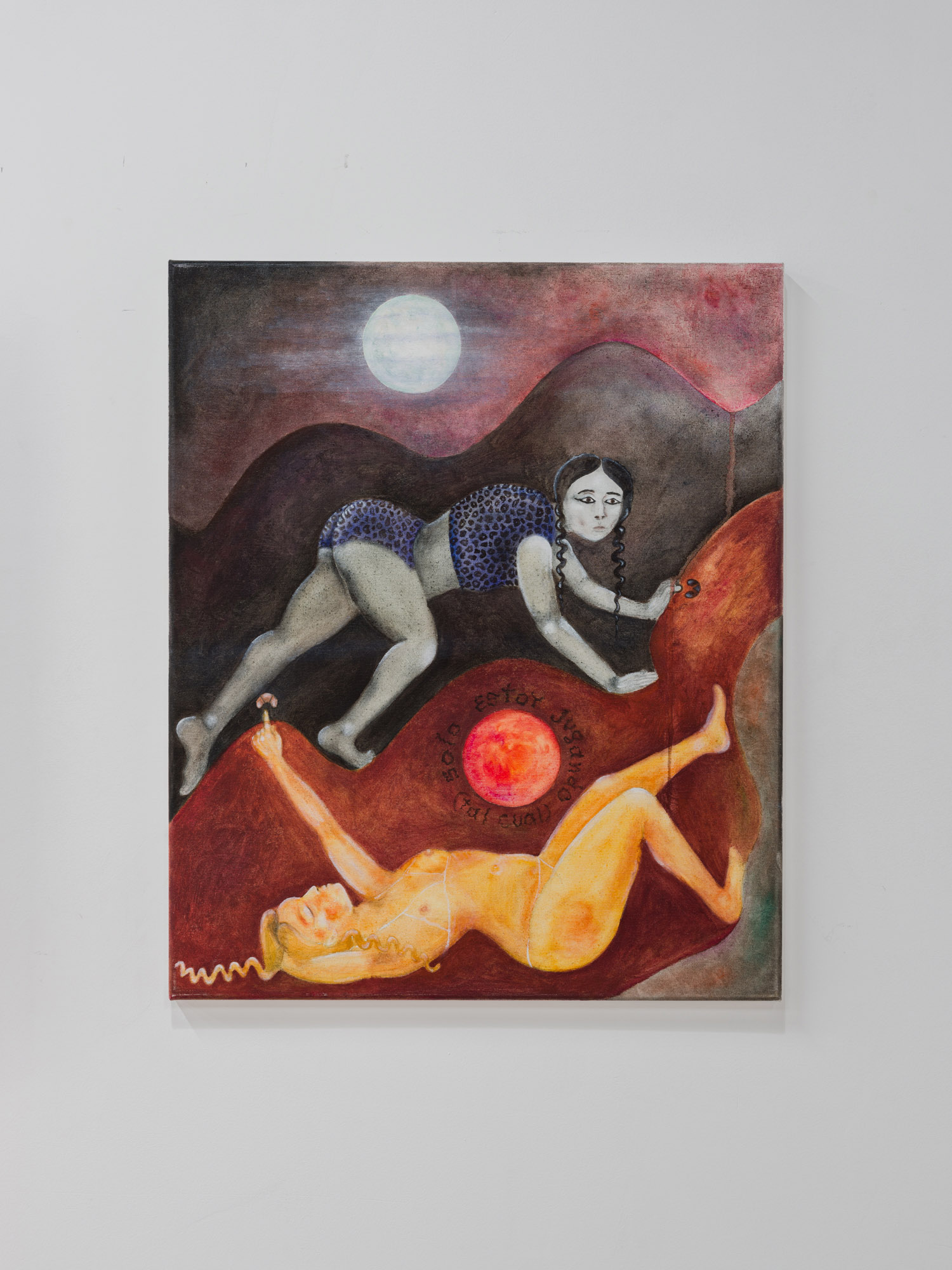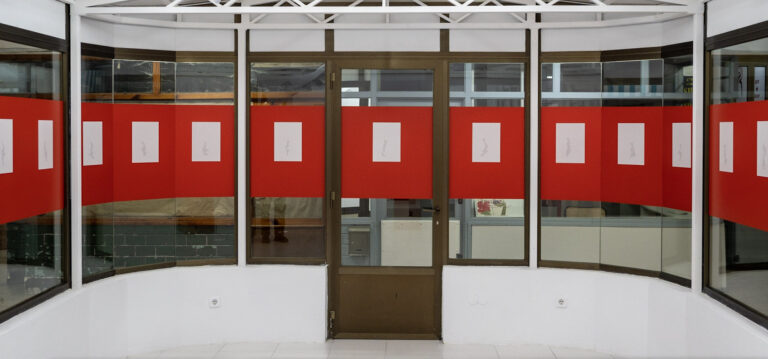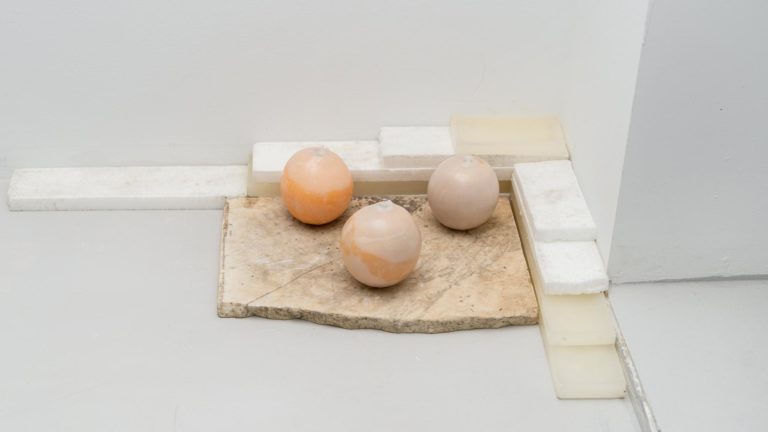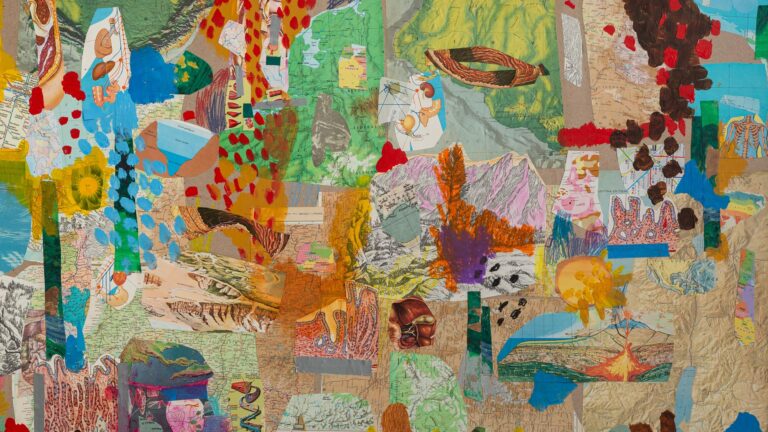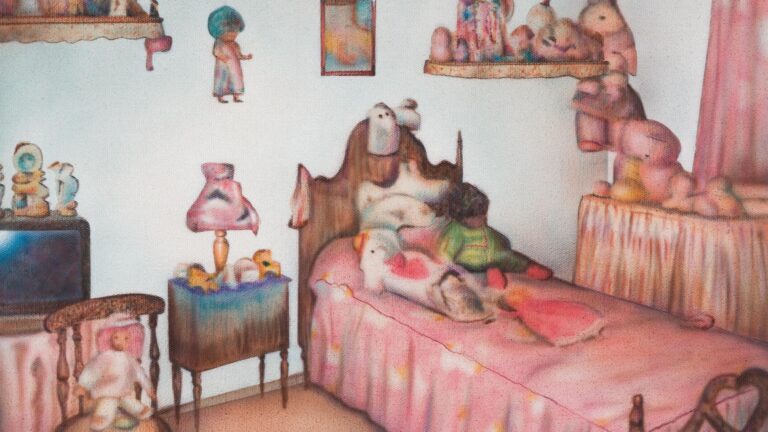Artist: Elena Aitzkoa, Miguel Benlloch, Uwe Henneken, Stefanie Popp
Exhibition title: Many Bodies Later
Venue: The Ryder, Madrid, Spain
Date: March 25 – May 27, 2023
Photography: Pablo Gómez Ogando / All images copyright and courtesy of the artist and The Ryder, Madrid/London
In 1928, Virginia Woolf published ‘Orlando, a Biography’, arguably one of her most popular novels. As the title suggests, the book is a free-form fantasy with a distinctive quality compared to Woolf’s other novels: it is a biography, for it attempts to represent the life of a real person who lives 500 years without aging and who develops the ability to transform her/his body, beginning the novel as a man and ending it as a woman. Woolf here accomplished a sharp satire of this fictional narrative and its heroes, presenting what could probably be seen as the first transexual in the history of literature, whose long-lasting life helped create a geography of the History of England and denounce, in the process and through fiction, the injustice derived from a patriarchal society. Orlando, is thus the biography of an era where the main character’s body is used as an artifact that expands, with no gender or age, multiplying itself and accompanying life, while prolonging it through its own expression.
This novel serves as a point of departure in order to establish a dialogue between four artists who conceive their practice as a rebellious corporeality. Free from the restrictions of a linear time, flirting and expanding it to re-imagine new ways of expressing life. The works by Miguel Benlloch, Uwe Henneken, Stefanie Popp and Elena Aitzkoa thread a path into an exhibition that looks at art as a disruptive tool where a biography can be a space to inhabit, creating through intuition and emotions an intimacy with no gender or rules, an intimacy still to be written.
In Miguel Benlloch’s own words, ‘the life lived’ was the driving force behind his artistic practice. The artist and activist understood life as the place in which to place the body, allowing it to become impregnated by its experiences and events, in pursuit of its own meaning. According to Benlloch, the body was nourished by lived time, by a series of sedimented meaningful experiences that gave rise to a topography of the body to traverse through his performances and actions.
In his performance Tengo Tiempo, Benlloch portrays an intimate ritual, slowly undressing himself removing the multiple garments that cover his body. When we await for the total nudity of his body to be unveiled, Benlloch shows up in a coloured sequin mini-skirt, a costume recurrently used in his performances and considered by the artist as an amulet. Then, nudity. Finally, the performer holds a white sheet which reads “I Have Time / Tengo Tiempo”. Time to build, to unbuild, to show, to reflect; in order to decide, to accept… The body as a cultural object and the clothes as the skin in continuous molting, bringing us back to new presents that accumulate in the subject and its surroundings memory.
Uwe Henneken, a German painter based in Denmark, understands his practice as a creative force that accompanies him, manifesting itself through his work and running in parallel to his life. At the beginning of the 2000s, the artist was recognized for his representation of solitary figures. Vagrants people that wandered through his semi-real landscapes, seekers that did not know what they were searching for, nor what was missing in them. In 2009, this body of work, reminiscent of the Biedermeier period, came to an end, coinciding with a vital crisis in the artist’s own life when he understood that he did not have anything else to say. His pilgrims, as he called them, had already arrived at their destination and there was nothing there. Having arrived to this conclusion which coincided with the birth of his children, his visual language evolved from a world made of references to philosophy and art history to a new one full of sensuality and fantasy where a series of non-human characters, without gender or prejudices, started to settle in his paintings. The Feelers, beings that are truly capable of feeling, above all things; the Doorers, entities with the power to cross a threshold without fearing what they will find on the other side; and the Pathers, characters with the ability to find and follow back their own original path. These and many other characters with different aspects and abilities suddenly started to meet in his paintings, to walk together as if those pilgrims who were looking for something in Henneken’s early works were already back, with the necessary answers and the right questions.
In a similar way to Miguel Benlloch, Uwe Henneken is increasingly aware about the fact that his artistic practice is a ritual of life that can have an impact on others. In his series Anamnesis, the artist abandons the narrative aspect of his work to focus on the actual act of painting. In this sense, this series is based on an intense meditation process in which to get in touch with his negative thoughts and emotions, painting them in a trance-like state and then immediately burning them at the doors to his studio. The purifying fire that Henneken witnessed took away the bad and lef the artist purified and open to inspiration to produce a new body of work where archetypical images such as the butterfly, the cave or the sun are shaped through a unique luminous colour palette that seeks to transmit an internal sense of knowledge and recognition in the viewer.
Stefanie Popp understands the beginning of a new work as the creation of a problem. In the artist’s own words, “I can either puzzle about a solution or wait for it to strike out of the blue. I like and need both. Some of them are terrible puzzles so I often put them away for long periods of time – consciously not looking at them is part of the process. Once I have gained enough distance to them, I ofen suddenly know how to go on”. Popp’s aesthetic is highly influenced by her yoga practice. It is through this discipline, where the body’s posture becomes a means to reach a spiritual outcome, that the artist creates an aesthetic of contorted bodies that hybridize with animal figures with an appearance devoid of perspective, reminiscent of Hindu art. The artist often baptizes her works with self-invented words or actions that come from ancestral worships, such as the hierophant, giving rise to a vocabulary where body, time and ritual go hand in hand to generate rebellious semantics.
Elena Aitzkoa’s sculptural work has a performative root, understanding time as an ally and the body as a tool to dialogue with the material in her works. Her sculptures are actions where she interacts with the material, soaking it in plaster, covering it with colour. Each work is an intimate moment that the artist decides to share with the viewer in the same way as someone could show the intimacy of their room. Manifested through a latency reflected in its damp appearance, it seems as if the textiles used were waiting to dry, absorbing the heat of the environment, recalling its past. The artist often performs with her sculptures, bringing them to the present time, making them resonate with the air of her whistles and letting them tell us something we do not yet know.
This exhibition aims to transport the viewer to a timeless place where a life can be unfolded in several acts and inhabit different bodies. Under this premise, the exhibition intends to create a scenario in which, as in Orlando, time is an ally and several bodies after, we can imagine disobedient biographies without inheritances, genders or schedules. Spaces of possibility where life is written with life and the future is yet to be made.


